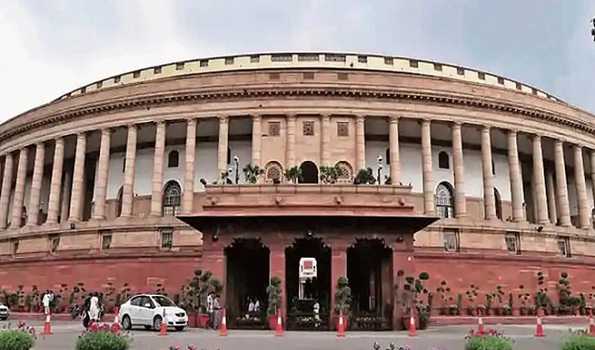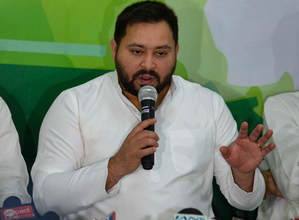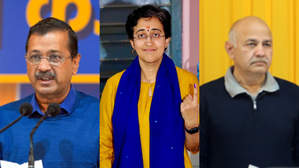
New Delhi: World War II ended with the first-ever use of a nuclear bomb by the US on Hiroshima and Nagasaki in Japan on August 6 and 9, 1945 respectively, resulting in the killing of nearly two hundred thousand civilians and the surrender of Japan a week thereafter.
What set in later was appropriately called the period of ‘Cold War’, in which nuclear deterrence rooted in the theory of ‘Mutually Assured Destruction’(MAD) kept the two superpowers from initiating a full-scale war. These were also the years of a tense ideological divide of the world between International Communism with state control of the economy and the Capitalist model of the Free Market.
The Vietnam War in the meanwhile revealed that military armament could work against the government but not necessarily defeat a people whose minds had been turned by an ideology.
The ‘asymmetry’ of the Vietnam battle was an indicator of the era of ‘proxy wars’ that would follow once the Cold War ended with the withdrawal of the Soviet army from Afghanistan and the consequent dismemberment of the Soviet Union and the demise of International Communism in 1991.
Post-Cold War, open warfare evidently gave way to ‘covert’ offensives by way of instigation of cross-border terror attacks, support to insurgencies and promotion of separatist movements.
The end of the Cold War coincided with the rise of faith-based terrorism because the anti-Soviet armed campaign was run on the war cry of Jehad and conducted in an asymmetric mode.
The US gave all credit to Pakistan for the success of the ‘Afghan war’ clearly in ignorance of the fact that Pak ISI had also patronised Islamic radicals of Taliban and Al Qaeda and managed to install the Taliban Emirate in Kabul in 1996 knowing well that these outfits considered US-led West as their first enemy.
The contradiction surfaced soon enough for the US to work for the ouster of the Emirate – which laid the turf for 9/11 – and realise the seriousness of the threat posed by Islamic radicals to its own security and the security of its allies.
The ‘war on terror’ launched by the US-led coalition first in Afghanistan and then in Iraq, saw radicalisation spreading in the Muslim world at the expense of the fundamentalist but pro-US regimes like Saudi Arabia, UAE and Bahrein.
The radical outfits used faith-based motivation as the instrument of terrorism. Pakistan has been riding two horses – trying to be in the good books of the US and collaborating at the same time with the radical forces of Taliban, Al Qaeda and ISIS.
Further, Pakistan’s strategic alliance with China multiplied the security threats to India specifically but the US-led West did not always see it from the Indian perspective which added to the challenge for Indian diplomacy and the country’s security set-up.
In the era of proxy wars, there is increasing reliance on the power of technology for combat. The strategy of countering ‘covert’ offensives of the adversary required political will and in the Narendra Modi regime, this has been coming forth in adequate measure.
Incidentally, there is a learning for Israeli security from the Hamas terror attack of October 7 – that technology should not be allowed to override the importance of human Intelligence.
It is interesting that the Russian military intervention in southern Ukraine in February 2022 was termed as a cross-border ‘operation’ and not a ‘war’ by President Vladimir Putin who spoke up for safeguarding the legitimate interests of the Russian-speaking population of the region. The US responded in a ‘proxy’ mode – supplying Ukraine with armament, putting economic sanctions on Russia and denouncing Russia’s action in the UN.
The surprise terrorist offensive launched by Hamas on Israel on the morning of October 7 from across the border killing over 1400 civilians including women and children – who were in the midst of celebrating the annual Sukkot musical festival – showed deep planning and secret mobilisation of resources.
Even though the attack was accompanied by an open warfare element of thousands of rockets being fired on Israel, these were meant basically to provide ‘cover’ to the Hamas militants to infiltrate en masse into the Israeli territory to unleash violence on civilians and create an atmosphere of terror in the area.
Hamas pursuing the radical agenda engineered this provocative attack knowing well that Israel would launch an all-out military retaliation which in ultimate analysis would lead to further radicalisation of the Arab world and draw the US-led West into a protracted military conflict.
Israel-Hamas confrontation has opened a second front for the US after the Ukraine-Russia ‘war’- this time around it is even messier than the latter because it has makings of a ‘war of religions’ as against the ‘political’ character of the Russian military offensive on Ukraine.
The US backing of Israel has shades of another ‘war on terror’ that the US had led following 9/11 – Israel is leading that counter-offensive in this case.
An additional challenge for the US is that because of the ideological opposition of Shia fundamentalism to the US, Iran is joining the Hamas side of the conflict through its militant wing – Hezbollah – operating out of Lebanon.
Islamic radicals and Shia fundamentalists are on the same side of the fence politically because of their shared hostility towards the US – even though left to themselves they would be at each other’s throats in terms of religious contradiction.
US President Joe Biden hit the nail on the head when he stated at a press conference in Washington on October 25 – occasioned by the visit of the Australian Prime Minister – that he instinctively believed one reason behind the Hamas attack on Israel was the recent announcement of India-Middle East- Europe Economic Corridor designed to integrate the entire region with a network of rail, road and ports to the great benefit of Israel as well.
It was during the G20 summit at New Delhi that India, the US, UAE, Saudi Arabia, France, Germany, Italy and the European Union signed a Memorandum of Understanding for establishing this economic corridor.
According to President Biden, this was a major effort to build a more sustainable and integrated Middle East by creating opportunities for investment across two continents.
What the US President should have added is that the forces of radical Islam have been on the rise in West Asia and elsewhere – led by Arab states like Qatar, Yemen and Syria – and were even confronting countries like Saudi Arabia and UAE which had struck strategic friendship with the US and accepted the idea of an accord with Israel.
Islamic radicals are politically leaning towards China, a country that had already struck a relationship with the Taliban Emirate at Kabul, in its march towards becoming a superpower opposed to the US.
Meanwhile, Netanyahu has declared that Israel was in the midst of a ‘fight for its existence’ and will aim at ‘eliminating Hamas by destroying the latter’s military and governance capabilities and getting Israeli hostages back’.
Israel was evidently engaged in planning a comprehensive military offensive taking into account the formidable network of underground tunnels built by Hamas in Gaza for its defence.
India has done well to denounce outright the terror attack of Hamas on Israel coming on the same page as the US, welcoming the Abraham Accord being worked out between Israel on one hand and Saudi Arabia and UAE on the other and supporting the idea of peaceful coexistence between Israel and a Palestinian state.
The spread of radicalisation adds to the security threat India already faces from Pakistan’s relentless sponsoring of cross-border terrorism in Kashmir and elsewhere and the determination of the Sino-Pak axis to destabilise this country.
India has taken the lead in despatching substantial humanitarian aid for taking care of the injured and displaced civilians in Gaza and thus giving a message for a peaceful resolution of the dispute in Palestine.
Whatever happened in the past, the Arab world today should find a way of recognising the state of Israel while demanding an honourable and equitable solution to the Palestinian issue.
Many Muslim leaders in India have sided with Hamas against Israel on communal lines, ignoring the danger that the democratic world as a whole would face if there were wars precipitated in the name of religion.
Border states of Kashmir and Punjab will require closer attention in the global environment created by the Hamas terror attack on Israel.
Pak ISI was continuing with the mischief of instigating protagonists of Khalistan abroad. Our Intelligence agencies are totally attuned to dealing with these threats.
The security scenario for India is particularly affected by the global trends of open warfare giving way to covert offensives, the Muslim world witnessing a constant rise of radicals and a new Cold War making its appearance between the US-led West on one hand and Xi Jinping’s China – as the head of what was the Communist block in the past – on the other.
China is in active pursuit of military, economic and political expansion and is alive to Sun Tzu’s precept of ‘deception’ in warfare and the theory of ‘two steps forward, one step backwards’ to achieve its objective in an unhurried way. Attacking the economic assets of the opponent, using social media for indoctrination and for ‘information warfare’ and launching cyber attacks are all in full use as the instruments of ‘proxy war’.
China held a high-profile world conference on the Belt & Road Initiative (BRI) in Beijing on October 17-18 — the third since the BRI was launched a decade ago — that drew the top leaders of some 130 countries including Thailand, Cambodia, Laos, Indonesia and Sri Lanka apart from a representative of Taliban.
President Putin was present — he had attended the earlier two meets as well – marking the advance of the ‘No limits friendship’ between Russia and China.
BRI was the outcome of China’s global infrastructure development strategy for connecting Asia with Africa and Europe through land and maritime routes.
The Beijing conference was designed to project China politically as the global leader of the anti-US block, step up Xi Jinping’s plans of making China a superpower through both military and economic routes and demonstrate China’s anti-West stand in both Ukraine-Russia and Israel-Hamas military conflicts.
The Beijing event firmed up the contours of the emerging Cold War with China -not Russia -leading the anti-US forces.
India’s strategy of pursuing bilateral and multilateral relationships for mutual security and economic gains while working for the cause of world peace puts it on the same side as the US and Israel particularly because the Sino-Pak axis working against India represented the forces of Marxist dictatorship and those harbouring Islamic radicalism.
The situation warranted that India and the US – the two largest democracies – must join hands to protect the democratic world order against these forces.
India has emerged through its G20 Presidency as a major world power whose counsel mattered on the issues of war and peace – this places India in a challenging position where it has to project its own security and economic interests as part of the larger humanitarian cause of making the world a better and safer place for everybody. Prime Minister Modi and his strategic advisors are handling this challenge very successfully.






